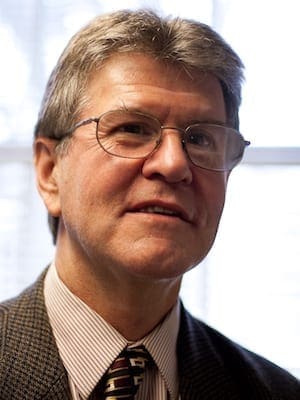Religion and immigration have been much in the news of late.
This actually gets to a lot of work I have been doing recently about how religions move and spread – in this case, mainly Christianity.
We regularly hear accounts of Christian missions from the global south to the north, for instance of African or Asian churches seeking to evangelize Europe or North America.
Certainly, that “reverse mission” phenomenon occurs regularly, and I’ve often had cause to write about it.
African churches are now firmly established in many European cities, not to mention in such U.S. centers as Houston and Atlanta.
African churches are a bustling concern throughout Europe, including some unlikely settings.
One spectacular example is the Kiev-based Embassy of the Blessed Kingdom of God, founded and pastored by Nigerian-born Sunday Adelaja, which claims some 50,000 followers in Ukraine alone.
In Britain, Africans pastor the nation’s four largest megachurches, while the Nigerian Redeemed Christian Church of God operates in dozens of countries.
In French-speaking lands, Congolese pastors and missionaries are as ubiquitous as are Nigerians and Ghanaians in the Anglophone world.
But while the global south churches are definitely there, we need to be very careful with the word “mission” in this context.
Missions happen, but they are not the only means by which religions spread, and not the most important. Our choice of words in these matters is really important, defining as it does the scope and nature of what we are describing. Intention really matters.
Let me illustrate this.
Back in 2012, the Pew Research Center published a very useful study titled “Faith on the Move – The Religious Affiliation of International Migrants.”
As the title suggests, this made no claims about the religious content or motivation of such migration, but only tried to identify who the migrants were. Pew found that around half of all global migrants were Christian, with another 27 percent Muslim.
But one chart in particular demands attention, namely the one listing “No. 1 countries of origin for migrants in each religious group.”
For Christians, the leading source-nation is Mexico, with around 12 million migrants. That’s intriguing because of issues of definition.
Mexican immigration is a major theme in U.S. politics, and the phenomenon can be discussed in various ways, but we virtually never think of it as “Christian migration,” even though millions of Christians are actually migrating.
Virtually none of those newcomers are moving for religious reasons, either to seek religious liberty or to undertake mission in “el Norte.”
Matters were different back in the 1930s when savage persecution by the secularist Mexican government actually did drive many faithful Catholics into the U.S.
But although the Mexican migration is not religious in intention, it has had enormous religious implications, and those will grow over time.
That migration has, for instance, had a vast effect on the Roman Catholic Church, in terms of its patterns of liturgy and devotion as well as its attitudes to politics and social outreach. Over time, that church will become ever more Latino in character.
Quite apart from Catholics, Mexicans have become the mainstay of many evangelical and Pentecostal churches.
In saying this, I am not clinging to the old stereotype of Latinos as simple pious believers. Many Mexicans are highly secular, besides the many others who are at best lukewarm in religious matters.
But enough Mexicans are active enough to make the kind of difference I am talking about. The act of migration tends of itself to encourage religious participation and belief.
As in earlier epochs, we have to be careful with the language of “mission,” with its implications of planned and intentional ventures into the pagan darkness.
On occasion, that is indeed the model by which religion spreads, but by no means always. Never underestimate the power of happenstance, or dare we call it Providence?
Commonly, ordinary people move from one area or another, sometimes reluctantly, and they take their religion with them with no particular intention of sharing it beyond their own community.
They might move as migrants, seeking better lives for their families, or in bygone times, they might have been transported as slaves and deportees.
The Aquila and Priscilla we meet in Acts would never have lived in Corinth had they not been kicked out of Rome.
Yet, however humble the conditions in which they arrive, such people create a bridgehead for their faith.
They build churches, originally to serve the highly practical needs of their own communities, but over time, those congregations attract interested seekers from the wider host community.
After some years, the same thriving churches become the bases for newly arrived and more committed believers, who define themselves explicitly as missionaries.
Believers arrive first, and the missionaries follow.
Commonly, the missionaries simply reinforce what has already been built. In very oversimplified form, that is the story of most African churches in North America and Europe.
And every word of that account applies equally to the growth of Islamic communities in the West over the past half-century.
Philip Jenkins is distinguished professor of history at Baylor University in Waco, Texas, and serves as co-director for the program on historical studies of religion in the Institute for Studies of Religion. He is the author of numerous books, including “The Great and Holy War: How WWI Became a Religious Crusade.” A version of this article first appeared on The Anxious Bench, where he blogs regularly, and is used with permission.
Philip Jenkins is distinguished professor of history at Baylor University in Waco, Texas, and serves as co-director for the program on historical studies of religion in the Institute for Studies of Religion. He is the author of numerous books, including “The Great and Holy War: How WWI Became a Religious Crusade.”

